Springfield, MA Pollen and Allergy Report for Summer 2023
Pollen Allergy Trends in Springfield, MA
When is pollen lowest in Springfield, MA?

February
Lowest month total PPM
Avg. PPM
When is pollen highest in Springfield, MA?

April
Highest month total PPM
Avg. PPM
How does pollen in Springfield, MA compare to Massachusetts?
Springfield has a higher average PPM than the state of Massachusetts.
Springfield yearly avg PPM:
Massachusetts yearly avg PPM:
How does pollen in Springfield, MA compare to the USA?
Springfield has a higher average PPM than the USA.
Springfield yearly avg PPM:
USA yearly avg PPM:
Is pollen worse this year in Springfield, MA?
Spring 2023 was worse than spring 2022.
Spring 2023 PPM:
Spring 2022 PPM:
Average PPM in Springfield, MA
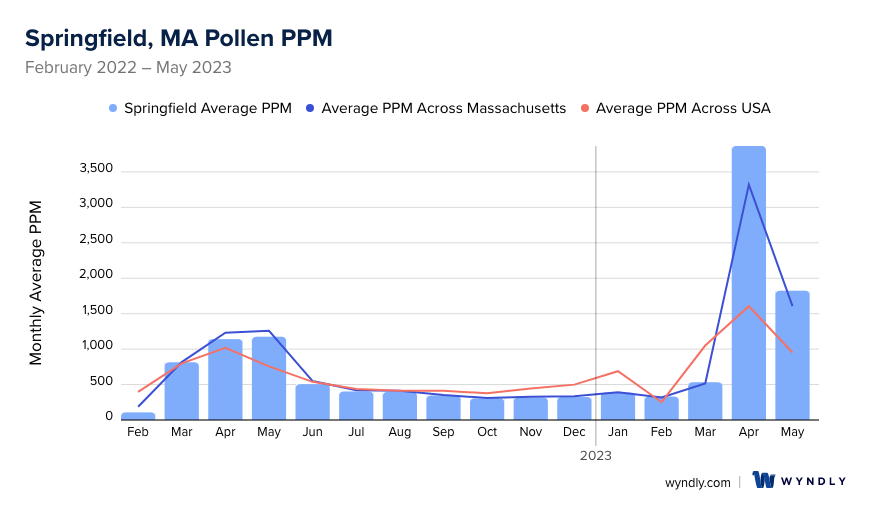
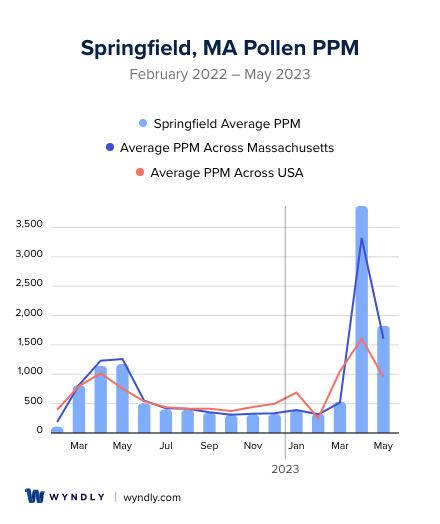
Springfield, MA Pollen and Allergy Breakdown by Month
Grass
When is grass pollen highest in Springfield, MA?
April has the highest grass pollen in Springfield, MA with an average PPM of
When is grass pollen lowest in Springfield, MA?
December has the lowest grass pollen in Springfield, MA with an average PPM of
Tree
When is tree pollen highest in Springfield, MA?
April has the highest tree pollen in Springfield, MA with an average PPM of
When is tree pollen lowest in Springfield, MA?
January has the lowest tree pollen in Springfield, MA with an average PPM of
Weed
When is weed pollen highest in Springfield, MA?
April has the highest weed pollen in Springfield, MA with an average PPM of
When is weed pollen lowest in Springfield, MA?
February has the lowest weed pollen in Springfield, MA with an average PPM of
Springfield, MA Pollen Monthly Breakdown by Pollen Type
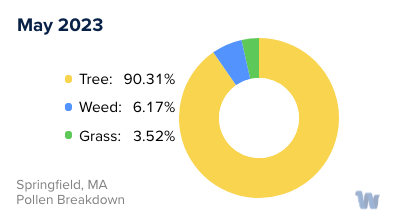
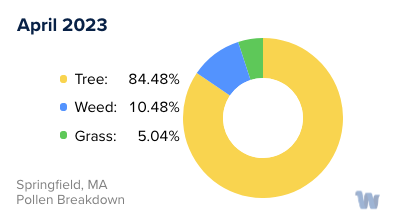
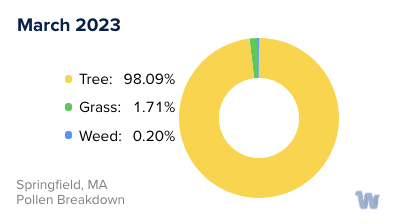
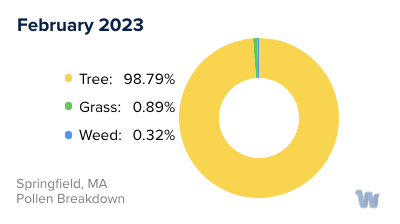
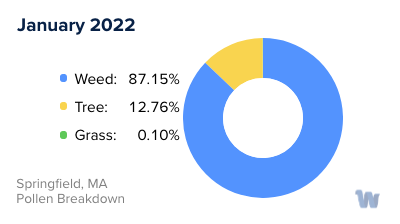
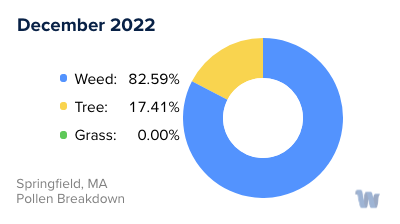
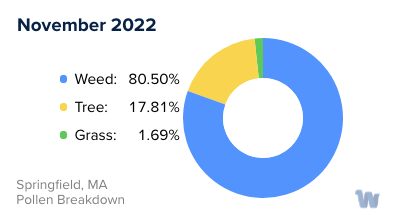
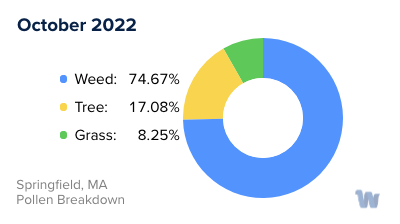
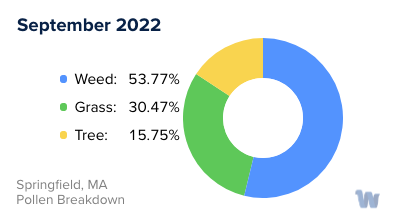
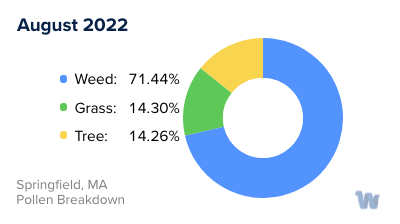
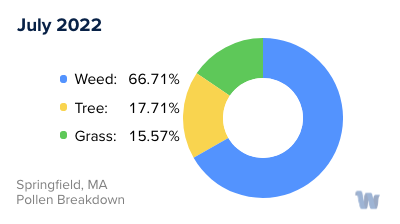
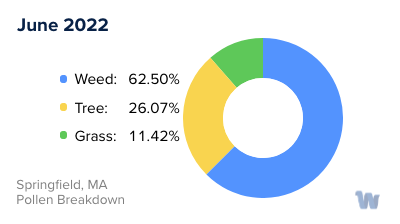
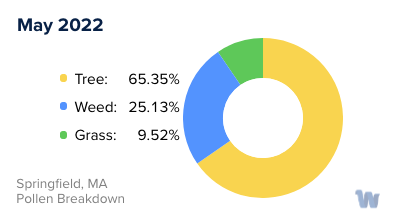
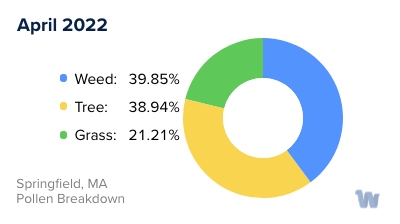
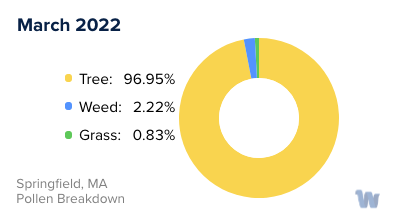
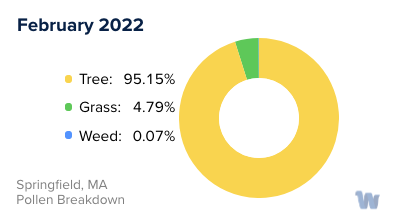
Pollen and Hay Fever in Springfield, MA
Pollen allergies, commonly known as hay fever, are a widespread concern among the residents of Springfield, Massachusetts. This condition, medically known as allergic rhinitis, occurs when your immune system overreacts to airborne particles like pollen, treating these harmless substances as potential threats and triggering a cascade of symptoms.
In Springfield, a variety of plants contribute to the pollen load in the air. Trees, grasses, and weeds are the primary sources. Tree pollen is typically the first to appear in the year, starting as early as late winter or early spring. Oak, maple, and birch are among the common tree species in the area that produce significant amounts of pollen. The lightweight pollen grains from these trees can be carried by the wind for miles, blanketing the city in a fine, allergenic dust.
Following the tree pollen season, grass pollen takes the stage in late spring and early summer. The most common culprits in this category are ryegrass and timothy grass. These grasses, which are often found in lawns and public parks, release their pollen during the warmest parts of the day.
Finally, as we transition into late summer and fall, weed pollen becomes prevalent. Ragweed is the primary offender during this period, releasing copious amounts of pollen into the Springfield air. Other weed species like lamb's quarters and plantain also contribute to the pollen count during this season.
Pollen levels can vary greatly from day to day and are influenced by factors such as temperature, humidity, and wind speed. The highest pollen counts often occur on warm, dry, and windy days. It's also worth noting that climate change may be contributing to longer and more intense pollen seasons, adding to the discomfort of hay fever sufferers.
Understanding the types of pollen and their seasonal patterns can help those with hay fever in Springfield anticipate when their symptoms might be most severe, allowing them to plan their outdoor activities accordingly. Despite the challenges pollen allergies present, many residents find the seasonal changes in Springfield to be a beautiful, if somewhat sneezy, part of life in this New England city.

